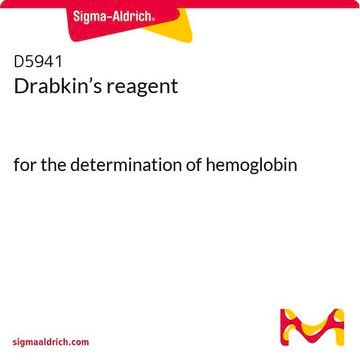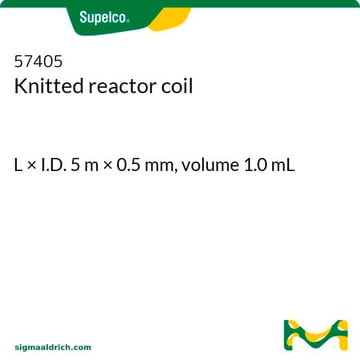B4184
Brij® L23 solution
30 % (w/v) in H2O
Sinónimos:
C12E23
About This Item
Productos recomendados
biological source
synthetic
Quality Level
description
non-ionic
form
liquid
mol wt
~1198.0 g/mol
concentration
30 % (w/v) in H2O
aggregation number
40
CMC
91 μM
transition temp
cloud point ≥100 °C
solubility
water: soluble
density
1.024 g/mL
HLB
16.9
SMILES string
CCCCCCCCCCCCOCCOCCOCCOCCOCCOCCOCCOCCOCCOCCOCCOCCOCCOCCOCCOCCOCCOCCOCCOCCOCCOCCOCCO
InChI
1S/C58H118O24/c1-2-3-4-5-6-7-8-9-10-11-13-60-15-17-62-19-21-64-23-25-66-27-29-68-31-33-70-35-37-72-39-41-74-43-45-76-47-49-78-51-53-80-55-57-82-58-56-81-54-52-79-50-48-77-46-44-75-42-40-73-38-36-71-34-32-69-30-28-67-26-24-65-22-20-63-18-16-61-14-12-59/h59H,2-58H2,1H3
InChI key
IEQAICDLOKRSRL-UHFFFAOYSA-N
¿Está buscando productos similares? Visita Guía de comparación de productos
Categorías relacionadas
General description
Application
- as a supplement of De Man, Rogosa, Sharpe (MRS) broth for monitoring bacteriocin production by lactic acid bacteria(66)
- as a component of developing buffer for the incubation of zymogram gel for metalloproteinase quantification(67)
- as a component of activation buffer for recombinant human hepsin(68)
Biochem/physiol Actions
Features and Benefits
Packaging
Preparation Note
Other Notes
Legal Information
comparable product
signalword
Warning
hcodes
Hazard Classifications
Aquatic Chronic 2 - Eye Irrit. 2 - Skin Irrit. 2
Storage Class
10 - Combustible liquids
wgk_germany
WGK 2
flash_point_f
Not applicable
flash_point_c
Not applicable
Choose from one of the most recent versions:
Certificados de análisis (COA)
Don't see the Right Version?
If you require a particular version, you can look up a specific certificate by the Lot or Batch number.
¿Ya tiene este producto?
Encuentre la documentación para los productos que ha comprado recientemente en la Biblioteca de documentos.
Los clientes también vieron
Artículos
Cathepsin B is a lysosomal cysteine proteinase with broad specificity. This protocol uses Nα–CBZ–Arg–Arg–7–amido–4–methylcoumarin as the substrate for fluorometric detection of Cathepsin B activity.
Cathepsin B is a lysosomal cysteine proteinase with broad specificity. This protocol uses Nα–CBZ–Arg–Arg–7–amido–4–methylcoumarin as the substrate for fluorometric detection of Cathepsin B activity.
Cathepsin B is a lysosomal cysteine proteinase with broad specificity. This protocol uses Nα–CBZ–Arg–Arg–7–amido–4–methylcoumarin as the substrate for fluorometric detection of Cathepsin B activity.
Cathepsin B is a lysosomal cysteine proteinase with broad specificity. This protocol uses Nα–CBZ–Arg–Arg–7–amido–4–methylcoumarin as the substrate for fluorometric detection of Cathepsin B activity.
Nuestro equipo de científicos tiene experiencia en todas las áreas de investigación: Ciencias de la vida, Ciencia de los materiales, Síntesis química, Cromatografía, Analítica y muchas otras.
Póngase en contacto con el Servicio técnico











